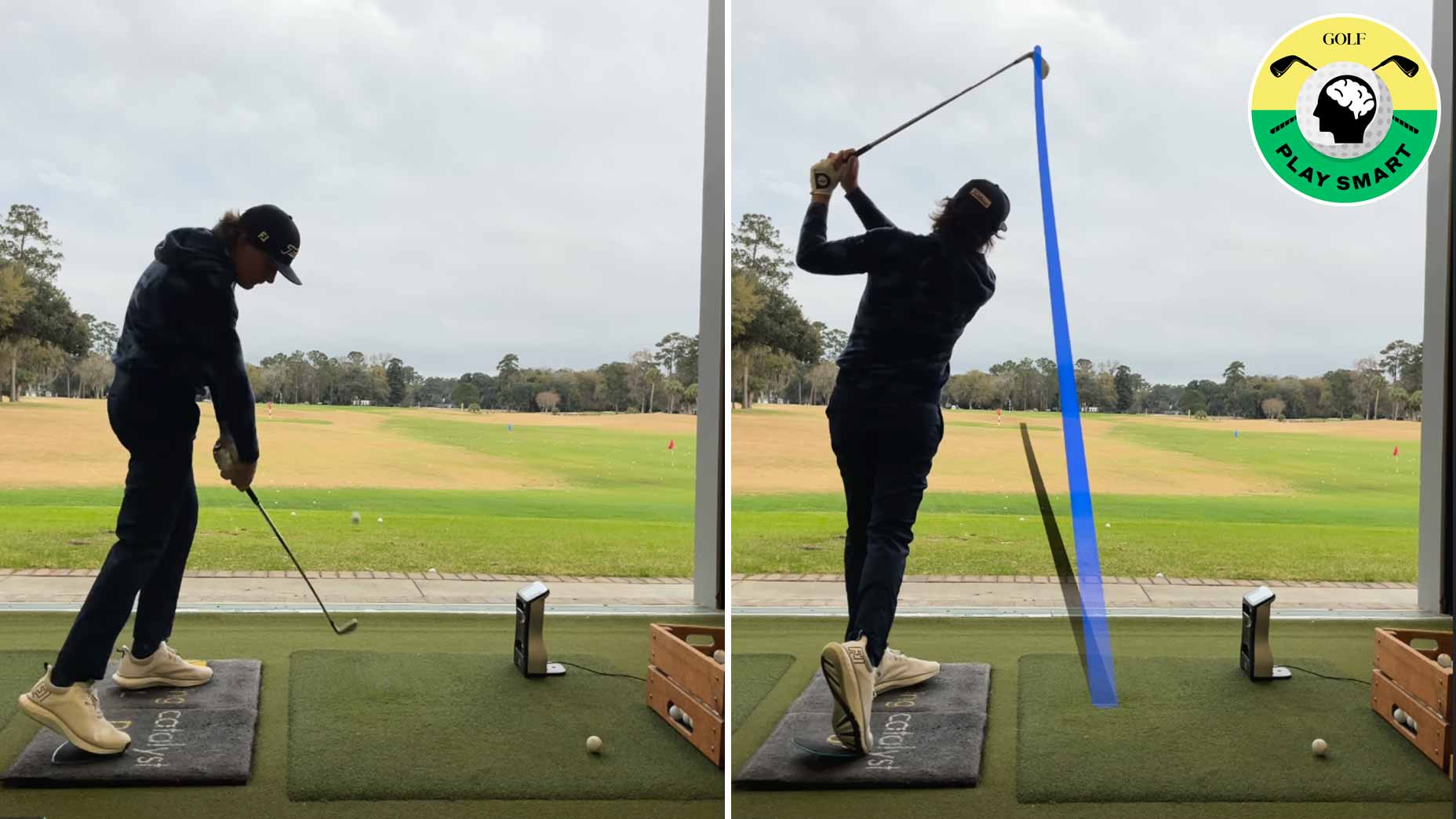Welcome to Play Smart, a regular GOLF.com game-improvement column that will help you play smarter, better golf.
Being able to shape the ball in both directions is a huge advantage when you get to the course. If you can get the ball to reliably move both right to left and left to right, it allows you to attack the golf course in many new ways.
Most players are only able to reliably hit their stock shot shape. There’s nothing wrong with that, and you can become very successful only shaping the ball one way, but at the end of the day it does limit some things you can do on the course. If you want to become a truly elite player, though, knowing how to get the ball moving in both directions is critical.
Padraig Harrington knows a thing or two about becoming an elite golfer. Over the course of his career, he’s won 40 times worldwide, including three majors. In today’s edition of Play Smart, we hear from the 52-year-old as he explains a simple drill he uses to get the ball moving both ways.
How to instinctively hit a draw or a fade. Also how to fix a slice or hook without any conscious thought. @fullswinggolf @europeantour @pgatour #golfathome #staysharp @wilsongolf #paddysgolftips pic.twitter.com/gAORfo5vGz
— Padraig Harrington (@padraig_h) May 29, 2020
How to hit a draw or fade
The shape of your shot depends on two factors: club path and face angle. This drill from Harrington will focus on club path.
When hitting a draw (for a righty) you want the club path moving more in to out, while if you want to hit a fade you’d want it to move out to in. When you’re practicing, you can use barriers to teach your club to move in that direction as you hit the ball.
Harrington recommends using a pair of headcovers (or something else soft) to create a gate to swing through. Let’s say, for example, you want to hit a fade. Set up one barrier inside the ball slightly behind it and set up another outside the ball slightly just in front of it.
“By putting this here, I know I can’t come in this way, and by putting that there I can’t go out that way,” Harrington says. “So I’ve got to come across a little bit more. Straight on line and a little bit left.”
By making these gates to swing through, you can force yourself to manipulate your path for any given shot shape. Give it a try next time you practice and before you know it the club path will be so ingrained for each shot that you won’t even have to think about it when you get to the course.










